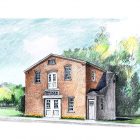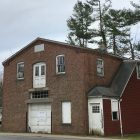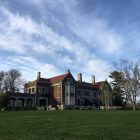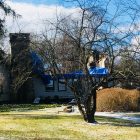Government
Attorney: Town Can Rescind $65,000 Allocation To Demolish ‘Mead Park Brick Barn’
|
As an apparent deadline for the town to move forward with the demolition of the Mead Park Brick Barn looms, preservationists have obtained the opinion of a prominent attorney that New Canaan’s legislative body may legally undo its approval of funds to raze the widely discussed structure. Citing case law that specifies a town’s legislative body “possesses the unquestioned power to rescind prior acts,” attorney Daniel E. Casagrande, a partner at Danbury-based Career & Anderson, concludes that “the Town Council has the inherent power to rescind or reduce its appropriation for the demolition of the Barn.”
“Neither the Charter nor the General Statutes contain any provision barring the Town Council from rescinding or reducing an appropriation,” Casagrande wrote in a Dec. 18 opinion sent to members of the New Canaan Preservation Alliance, which had retained him.
“Similarly, the Town Council’s rules contain no restriction on its authority to rescind or reduce an appropriation. Finally, since the Board of Selectmen has not yet acted to award a demolition contract, no vested rights in any third party have intervened that would limit the Town Council’s rescission power.”
Casagrande referred to the Town Council’s vote in May to approve $65,000 for the Barn’s demolition—a 6-6 tie broken by the first selectman, as per the Town Charter. The attorney’s findings come as New Canaan nears a deadline with respect to two companies that won bids to tear down the century-old structure at the northern edge of Mead Park— where Standard Oil’s horse-drawn delivery wagons used to fill containers for fuel delivery in New Canaan—and dispose safely of its remains.



